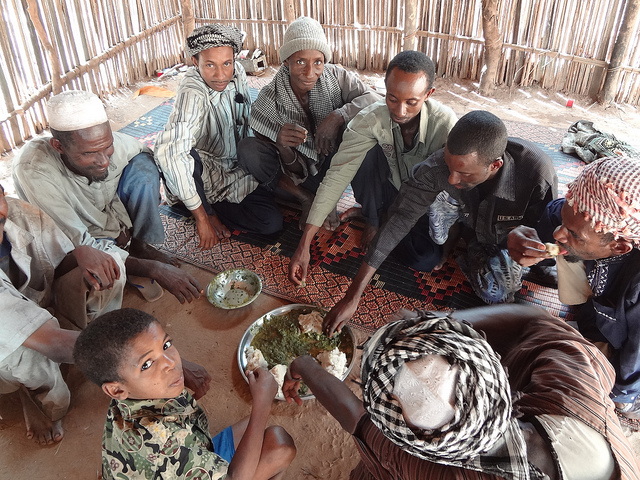
Efforts to establish “safe reporting sites,” where rebels with the Lord’s Resistance Army, or LRA, can surrender peacefully, are starting to pay off. Enough Project partner Invisible Children recently reported on their blog:
Five individuals, some of them teenagers (…), escaped into Mboki, the first established Safe Reporting Site, after multiple years in the LRA and cited defection flier messaging as one of their main pieces of encouragement. (…) They walked out on November 30th and are no longer are living a life captive by the LRA.
Invisible Children has worked hand-in-hand with local community leaders, regional security forces, and U.S. military advisors to set up safe reporting sites across areas affected by the LRA in the Central African Republic and South Sudan. In contrast to previous initiatives implemented by MONUSCO in Congo, where the sites were established in remote locations in the bush, these new sites are located close to small villages with permanent deployment of local security forces. This is paramount to ensure the safety of civilians and to protect the defectors.
Escaping from the LRA is not easy. First of all one have to get the courage to run away from the group, with the danger of being killed by the former comrades, if unsuccessful. Then there are the practical questions like where and how do you escape?
In August 2012 I travelled with the U.S. advisors to Gulu in northern Uganda and took part in a series of meetings with former LRA commanders, who advised on how the reporting sites could be created and how best to pass on the message to active LRA fighters. Their main recommendations were that the sites should not be ‘opened too fast’ and that sensitization of the local communities next to the sites was absolutely crucial for success. All it would take would be one case where the local people harmed a LRA defector to make the whole effort fall apart, they warned. Fear of repercussions from local communities and security forces have been and continue to be one of the major stumbling blocks that hinder defections.
The safe reporting sites play a crucial role in a multifaceted strategy needed to end the LRA, and the efforts are having a demonstrated impact. As one example, a defector who surrendered close to Mboki village in CAR was transported into the village on the back of a motorcycle driven by one of the local residents. This would have been impossible just a few months back. Next step should be to replicate these positive initiatives to the LRA affected areas in Congo.
The former LRA commanders also recommended that defectors who recently left the bush and those already re-established in civilian life should broadcast radio messages together during the same recording. The purpose is to counter the widespread fear within the LRA that defectors are killed once the recordings have been done. New joint-radio messages are now broadcasted across the LRA affected areas.
The U.S. advisors are also using innovative strategies to reach LRA fighters who are not able to listen to the radio. The advisors are using an air-borne speaker system—basically huge speakers mounted on a helicopter, which flies over the jungle where groups of LRA are believed to be hiding. Both pre-recorded and live broadcastings can be made. Former high-ranking LRA commander Caesar Acellam has already done a couple of live broadcasts, where he was in the helicopter speaking directly to his former fighters in the bush. Already on the second day when the helicopter flew over the jungle in CAR two people managed to escape from the LRA, citing that they “heard the voice from the sky.”
Photo: Mbororo cattle herders sharing lunch in Obo. The Mbororo track through the bush, when they go to sell their cattle in the neighboring villages. This puts them at risk of lootings and attacks from the LRA. (Enough / Kasper Agger)
Related Stories:

